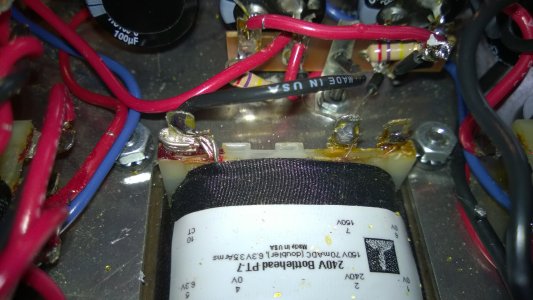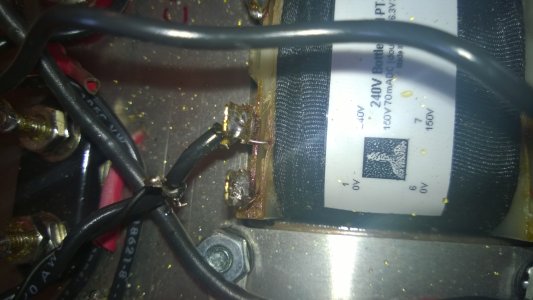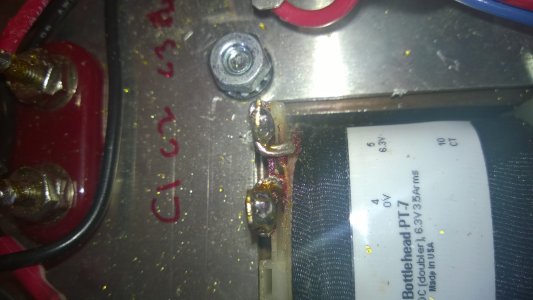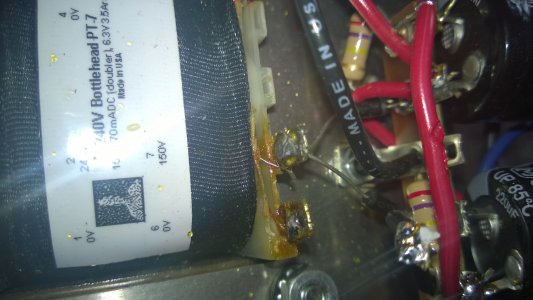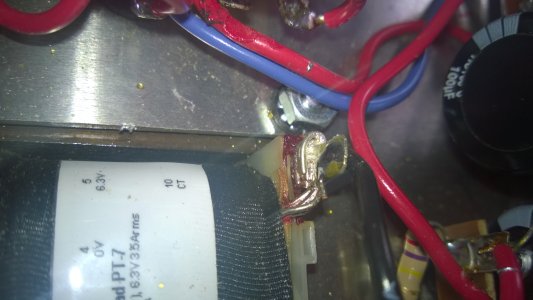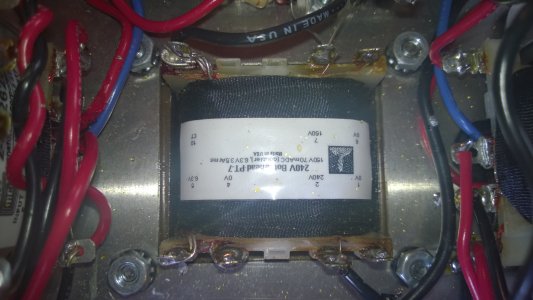Wow - you've done some good guessing!
If I am reading your posts right, it is now down to the heater winding on the transformer and the recifiers/resistor/capacitor.
I'm sorry to say this because it will be a pain, but you should remove the diodes from one of the transformer terminals, 4 or 5. If I were you I would remove the from both and unbolt the power supply terminal strip. Then see if you can blow the fuse - it is extremely unlikely that the transformer winding is internally shorted, but we need to be sure. At this point, only the transformer primary (which you have already confirmed is correctly connected) is connected. In the unlikely event that the fuse still blows, the transformer is suspect - but that winding is only 0.095 ohms and you probably can't measure the difference between that and a lower resistance.
Assuming you do NOT blow the fuse this time, then the power supply that you pulled off, and probably have in your hand, is somehow shorted or incorrectly wired or has bad components. I can't see enough in the pictures to tell what is going on, and you may find that a bright light, magnifying glass, and a lot of patience is needed even if you have it in your hand. But that's why I suggested removing it all.
Again, if it were in the Bottlehead lab and my job was to fix it, I would just throw is away and build a new one. But you would have to request and wait for the parts, so make your own judgement about how much time to spend puzzling it out.


